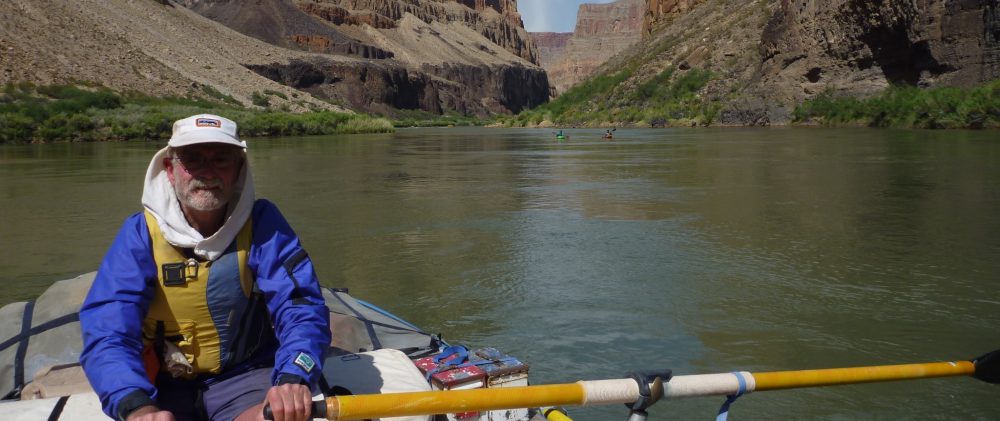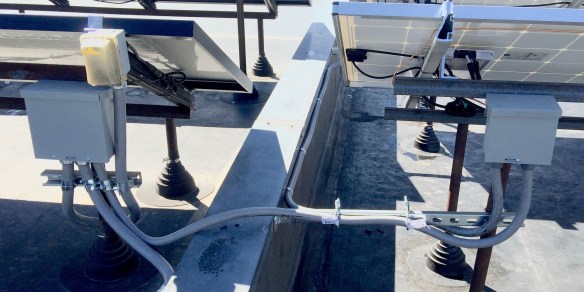 GaiaGPS is the single best App I’ve ever purchased, and that’s coming from a parsimonious Scots miser who hasn’t purchased more than a dozen App’s for his smartphone, and those few all under $3.
GaiaGPS is the single best App I’ve ever purchased, and that’s coming from a parsimonious Scots miser who hasn’t purchased more than a dozen App’s for his smartphone, and those few all under $3.
Let’s just get the price issue out of the way at the onset: it costs $19 from the App Store for iOS devices and at Google Play for Android devices. If the cost puts you off from trying this invaluable backcountry App, then find someone who’s using it and get a first-hand demonstration, or visit the GaiaGPS website to view a demo.
GaiaGPS has extended my hiking and backpacking experiences many-fold since I first saw another hiker using it on the trail. He was following a track someone had given him, recording his own track with all the real time stats, all the while viewing his current location on a clearly visible fully-zoomed USGS topo.
Questions immediately came to mind: What does it cost? How much are the topos? How large is the app? How do you get other people’s tracks? Does it eat up your smartphone battery and what was that name again? (It’s GaiaGPS).
I’ll have to admit I had to look up “gaia” on the internet; its The ancient Greek goddess of the earth, mother of the Titans, in case you’re clueless as well.
 I’ll also admit more than once I’ve been “off track” when hiking and backpacking. Now with GaiaGPS on my smartphone it happens less often, or more to the point, for not as long. Having a real-time GPS cursor following my footsteps is a pretty amazing feature to have in my pocket.
I’ll also admit more than once I’ve been “off track” when hiking and backpacking. Now with GaiaGPS on my smartphone it happens less often, or more to the point, for not as long. Having a real-time GPS cursor following my footsteps is a pretty amazing feature to have in my pocket.
GaiaGPS on a smartphone doesn’t use or need cell tower availability or coverage, rather it uses the phone’s internal GPS chip. It works anywhere in the world, unless you’re in a deep dark canyon with walls that obscure most of the sky. My GaiaGPS recorded tracks seem to do just fine in dense forests and wooded areas but will jump diagonally off track when it’s bouncing off steep walls and cliffs, righting itself once it can “see” more sky.
The phone stays in my pocket (or hip belt) until I’ve sensed I’m off track, have an intersection choice to make, or just am curious how far we’ve gone. But GaiaGPS can tell you much more if you choose: such as knowing the distance, altitude, moving time versus your total time, average speed, and stopped time, to name a few.
What really pleases me is that I now have all those GPS features combined with a camera and phone. I’ve eliminated my Garmin Trek’s 5.1 ounces (that I rarely used) along with 4.75 ounces for my point-and-shoot camera and consolidated those functions into my iPhone. The 9.85 ounce savings allows other gear, or better yet cutting my base weight down closer to that elusive 10-pound number.
And just as preparing for an adventure is enjoyable and rewarding, checking out my tracks and stats after the hike has added to my overall joy of backpacking.
Sharing the track is fun as well. You can export the track via email or text message as well as import it into Google Earth or other mapping applications like Garmin Base Camp. I often take a screen shot of the imported Google Earth track and place it in my blog to give folks a sense of where I’ve been hiking.
Just buying the app can be a little intimidating and even frustrating if you don’t know how to use it to its full potential. GaiaGPS offers you all the USGS topos for the United States for free, as long as you are online (connected to WiFi). You must select an area (draw a box around and Save) the region you’d like to have on your phone while you’re still online.
 The features and operation are very straight forward, but it takes a little exploring to figure that out without someone showing you or watching the numerous very short how-to videos offered in the Help Section of their website.
The features and operation are very straight forward, but it takes a little exploring to figure that out without someone showing you or watching the numerous very short how-to videos offered in the Help Section of their website.
You can certainly Record a Track without a single bit of help and download the map tiles after-the-fact, but if you’re actually trying to navigate with a topo offline you need to have those USGS (or other versions of the many maps provided) loaded beforehand. Users new to the app complain of “blurry” topos when in reality they haven’t downloaded the actual map tiles and are just seeing the default low resolution overview map.
 There is a long list of features provided with the basic version, but the overall beauty of the app is having a super clear, zoom-able topo of where you are traveling and the GPS cursor arrow marking your current location. If you’ve started recording your track, the line of travel is shown in a contrasting color telling you where you’ve been and possibly how far off track you might be.
There is a long list of features provided with the basic version, but the overall beauty of the app is having a super clear, zoom-able topo of where you are traveling and the GPS cursor arrow marking your current location. If you’ve started recording your track, the line of travel is shown in a contrasting color telling you where you’ve been and possibly how far off track you might be.
I especially like loading up someone else’s track for a hike or ride, and using that to show me the route I’m planning to travel. That feature is as easy as emailing yourself the previous track (from a friend or off the internet), tapping the attachment and selecting Import to GaiaGPS. It loads in your GaiaGPS Folders section and you can “Show on Map” with the press of a button.
 After using GaiaGPS and collecting numerous tracks, I really appreciate the easy way I can organize the various tracks into Folders, making finding and utilizing previous tracks far easier.
After using GaiaGPS and collecting numerous tracks, I really appreciate the easy way I can organize the various tracks into Folders, making finding and utilizing previous tracks far easier.
This app could be something you didn’t know you needed, but it soon will be something you can’t live without. Especially if it helps get your pack weight down by eliminating an extra device. As mentioned earlier, GaiaGPS has numerous short and to-the-point video tutorials (https://help.gaiagps.com/hc/en-us/categories/202519108-iOS), in the Help section of their website online, for each feature. Check it out; you’ll like it.





















 This week we’re working on a solar array for our adjacent condo
This week we’re working on a solar array for our adjacent condo
 You can see the older array in the background on the adjacent roof. Sealing the boots is exactly the same as patching a dinghy but there is a different liability when it’s on an HOA roof, that’s why we’ve employed licensed roofers. Fortunately it only took two of them half a day.
You can see the older array in the background on the adjacent roof. Sealing the boots is exactly the same as patching a dinghy but there is a different liability when it’s on an HOA roof, that’s why we’ve employed licensed roofers. Fortunately it only took two of them half a day.























































